>>> For more on this topic, read the complete Bear East series here .
Across Southeast Asia, no nation has such a close and long-standing relationship with Russia as Vietnam. Moscow is not only one of Hanoi’s few trusted “comprehensive strategic” partners, but for decades has been its main defense supplier.
This special “traditional and fraternal” relationship, however, is now facing its most serious test as Hanoi seeks to diversify its international relationships and cozies up to the West.
Six Kilo submarines
There is no greater symbol of the increasingly complex defense relationship than the six state-of-the-art Kilo-class submarines that Vietnam purchased from Russia in December 2009.
The US$2 billion contract signed by the-then Prime Minister Nguyen Tan Dung remains Vietnam’s biggest ever arms deal and involves costly ongoing maintenance.
Dubbed the “black hole” for its stealthiness, the diesel-electric submersible was said to be in high demand, but the contract was signed and executed promptly to help Vietnam meet its defense needs.
In just eight years, the six submarines were manufactured and delivered to Cam Ranh Naval Base in central Vietnam where they’ve been sitting quietly since. Not much has been heard about them until this July, when the general secretary of the Vietnamese Communist Party mentioned them in his just-released book on Vietnam’s defense strategies.
Vietnamese Kilo submarines thread - Largest submarine force in ASEAN with 6 submarines. Dubbed the "black hole" since its so difficult to detect; known to sneak undetected next to aircraft carriers. It has 6 torpedo tubes, carries Russian Kalibr cruise missiles. #Vietnam pic.twitter.com/QlxLTREYOc
— Indo-Pacific News - Geo-Politics & Defense (@IndoPac_Info) September 29, 2018
“[B]uying six Kilo-class submarines all at once was not entirely the best option if you look at it from an international angle, considering their effectiveness and deterrence capabilities,” wrote Nguyen Phu Trong.
Those rare if cryptic words from Vietnam’s top political leader may point to a certain amount of political infighting, but they also may signal a reconsideration of the role of Russia as the country’s main – and in some areas the only – military equipment supplier.
The dependence on Russian arms was rooted in the Vietnam War. According to official sources, in the period between 1961 and 1964, the Soviet Union provided North Vietnam with more than $200 million worth of weapons and military equipment, which served as the backbone of the North Vietnamese navy and air force.
Military aid was doubled in 1965 to $210 million in one year alone and increased to $910.7 million in the three following years. The majority of North Vietnam’s arsenal then was from the USSR.
Hanoi still is Russia's biggest arms buyer in Southeast Asia, accounting for more than 60% of its regional sales. According to the Stockholm International Peace Research Institute, between 1995 and 2021, Vietnam imported $9.1 billion worth of weapons and military equipment, among which Russia accounted for $7.4 billion or 81.6%.
Major buys were, apart from the six submarines, Sukhoi Su-30MK2 multirole aircraft, Gepard 3.9 class frigates, patrol and fast attack ships, T-90SK main battle tanks and Bastion coastal defense missile systems.
"Vietnam's dependence on Russian arms was further exacerbated by the fact that it could not find alternative and reliable sources of imports," Le Hong Hiep, coordinator of the Vietnam Studies Programme at ISEAS – Yusof Ishak Institute in Singapore, recently wrote.
“Arms from Western countries were generally less affordable than Russian arms. Even if Vietnam could afford them, some would not be available due to sanctions and export controls,” Hiep wrote.
According to the researcher, the reduction in Russia’s arms sales to the region in the wake of Moscow’s invasion of Ukraine has made it “imperative for Vietnam to accelerate its diversification of arms imports away from Russia.”
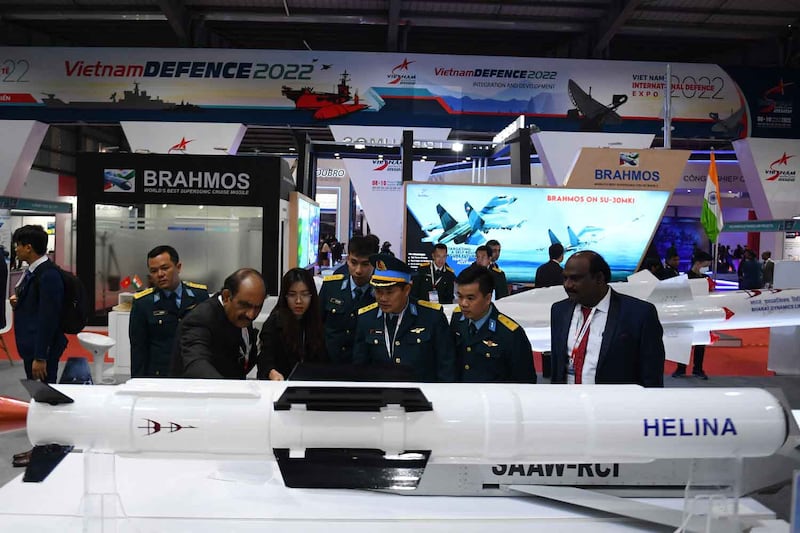
Diversification
"Although the Vietnam People's Army is likely to depend on equipment originally supplied by Russia for years to come, for multiple reasons Hanoi has begun to diversify its military procurement and to rely less on Russia," according to a report by the International Institute for Strategic Studies in March.
An international arms trade fair was held in December 2021, in Hanoi. Vietnam Defence 2022 helped "diversify defense equipment procurement sources,” said Vietnamese Prime Minister Pham Minh Chinh at the opening ceremony.
The fair also aimed at “introducing Vietnam’s defense capabilities and Vietnamese-made weapons to our international friends,” according to Maj. Gen. Nguyen Viet Hung, deputy political commissar of the army’s General Department of Defense Industry.
“The diversification is happening now,” said Nguyen The Phuong, a Vietnam military specialist at the University of New South Wales. “Vietnam’s engaging with other arms manufacturing countries such as South Korea or the Czech Republic.
“Another approach is to develop a strong domestic defense industry, which has already yielded some initial results,” Phuong said.
“But it is a long-term goal. In the short term, the best option from Vietnam's perspective would still be to rely on Russian supply because there is no alternative for big ticket items,” he added.
Reuters reported that Vietnam and the United States are negotiating the sale of a number of F-16 fighter jets to Hanoi, after the two countries established a so-called comprehensive strategic partnership in September.
Vietnam, however, continues to pursue large-scale arms procurement from Russia. Radio Free Asia saw an official document dated May 27, 2023, and signed by Prime Minister Pham Minh Chinh, informing the Russian government of Vietnam’s interest in “a new loan from the government of the Russian Federation for Vietnam to purchase Russian-produced weapons and military equipment.”
In July and August, Vietnamese officials including Defense Minister Phan Van Giang and Deputy Minister Hoang Xuan Chien made several visits to Russia “to promote defense cooperation.”
Chien was quoted as saying that Vietnam plans to make "every effort to implement" the plans that were agreed with Russia.
“Vietnam will always be with you in any conditions," he said.
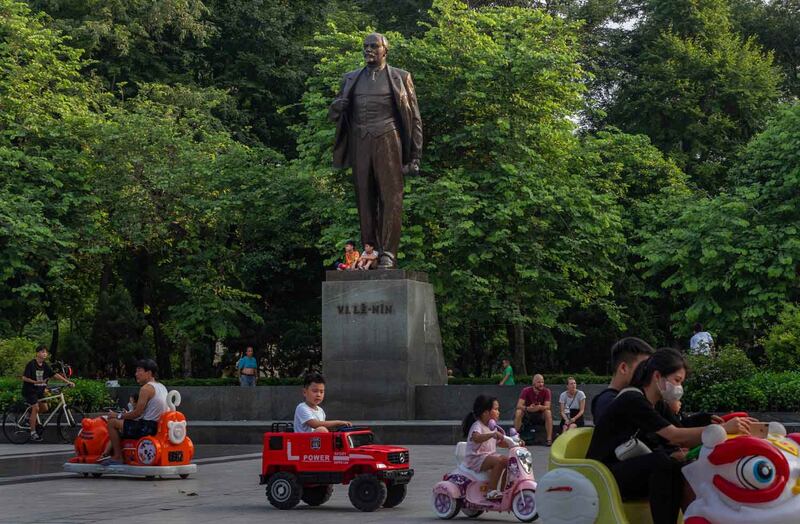
'Mr. Soviet Union'
“I think it’s fair to say that Hanoi and Moscow have a special relationship that’s built on a history of politics, ideology, but also a relationship that developed during a crucial stage of the history of the Communist Party,” said Jonathan London, a Vietnamese expert at Leiden University in the Netherlands.
“It’s important for people in the U.S. and around the world to appreciate that it's an absolutely important and significant part of Vietnam’s history, politics, political culture, it’s not something that is going to disappear,” London said.
A large proportion of the Communist Party and state personnel were trained in the former Soviet Union. According to official statistics, from 1950 to the present day more than 50,000 Vietnamese were educated in the USSR, and after that, Russia. Some of them became successful, such as Pham Nhat Vuong, chairman of Vietnam’s leading business VinGroup, or Nguyen Thi Phuong Thao, CEO of VietJet Air.
Although Soviet scholarships are no longer on offer, there are still an estimated 6,000 Vietnamese students studying in Russia, mostly in Moscow and St. Petersburg.
Besides the students, around 200,000 factory workers were also sent to all corners of the Soviet Union between 1980 and 1989. Many of them remained there after the collapse of the USSR.
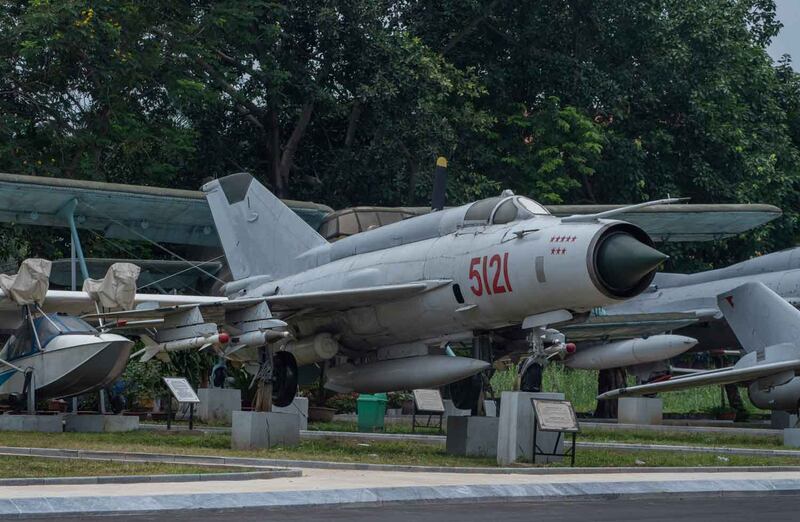
The connection was particularly strong during the Vietnam War and immediately after, when the Soviet Union was the sole supporter of Vietnam’s post-war economy.
Some 13,500 Vietnamese officers underwent training in Soviet military academies and schools and nearly 11,000 Soviet military advisors were sent to North Vietnam during the war.
In 1965, the USSR agreed to supply North Vietnam with financial aid, military equipment and advisers.
China was another wartime ally, but Moscow’s influence was predominant during the 1970s and 1980s when Beijing and Hanoi severed ties after the Vietnamese leadership accused China of “betraying Vietnam’s revolution” and “making a deal with U.S. imperialists behind our back.”
Since the departure of the last French troops from North Vietnam in 1954, most foreigners seen in areas above the 17th parallel - the demarcation line between North and South - were from the USSR. Until the 1990s, the Vietnamese still referred to any Caucasian-looking person on the street as “Ong Lien Xo,” or “Mr. Soviet Union.”
Hanoi is probably the only city outside the former Soviet Union that still hosts not only a Lenin statue but also one of Felix Dzerzhinsky, the fearsome Soviet secret police chief.
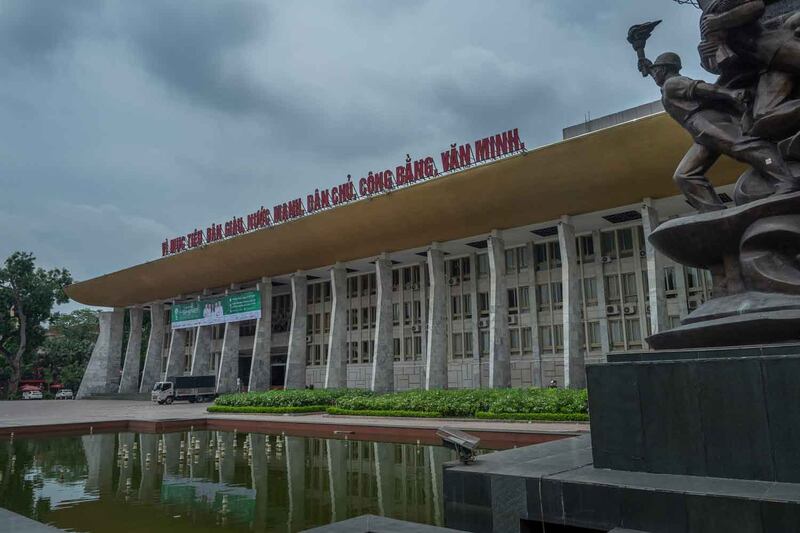
Russian businesses still play an important role in Vietnam’s economy, with three Russian state-owned energy companies – Zarubezhneft, Gazprom and Rosneft – operating there. Oil contributes trillions of dong in revenue for Vietnam’s government budget, and the presence of Russian firms has also been seen as a sign of support for the country’s sovereignty claims in disputed areas in the South China Sea, where Western oil companies withdrew under China’s threats.
With such strong historical and strategic connections, it’s easy to understand why Hanoi took a neutral stance and refused to condemn Russia’s invasion of Ukraine in February 2021.
Yet criticism has emerged as Vietnam has opened up to the West for both political and economic purposes. Ordinary people now care more about their living standards and education than the past wars and ideologies.
And that shift in attitude has become more and more noticeable. Political commentator Pham Gia Minh, who also went to university in Russia, said that the war in Ukraine was a divisive issue, even in his family.
“My son is supportive of Ukraine and he often argues with me about Russia. Among my friends, too, there are people who hate the war and Putin.”
Jonathan London from Leiden University said that the war in Ukraine caused a significant fracture in Vietnam’s political system.
“I think that many people in Vietnam’s party and state that historically have a lot of sympathy and experience with Russia were absolutely appalled and outraged by this war,” he said. “In Vietnam’s ministry of defense, the army, the political elite, there is a deep concern, reservation and even anger.”
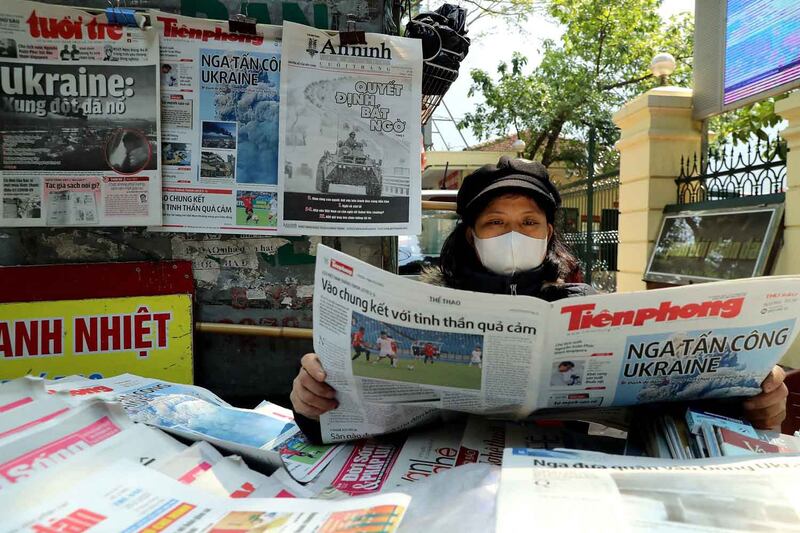
Hanoi's balancing act
Hanoi is now facing the real test of how to navigate between world powers such as Russia, China, Europe and the United States.
“American influence is probably the strongest at the moment, especially over young people. But Russia has its clout in military matters and also in the exploration of natural resources, such as oil and gas,” Pham Gia Minh said. “So, Hanoi wishes to maintain traditional ties with Russia and not have to pick sides.”
Vietnamese strategists have recently spoken about “bamboo diplomacy” – an increasingly popular concept among countries in Southeast Asia, symbolized by the ability of the bamboo plant to bend with the wind but never break.
The Vietnamese leadership has been promoting the motto, “Be friends with every country in the world,” while maintaining the “Principle of Three No’s” (no partaking in military alliances, no siding with one country to act against another, and no foreign military bases on Vietnamese territory) in its defense policy.
Even foreign ship port calls are divided equally among partner states.
“The key for Vietnam and its leadership is how skillfully they can cultivate the relationships that promote their best interests,” London said.
The invasion of Ukraine has put Vietnam “between a rock and a hard place,” said Carl Thayer, a veteran Vietnam expert from the University of New South Wales in Canberra, Australia.
The Communist Party in 2021 “approved the most ambitious military modernization program in Vietnam’s history,” according to Thayer, who noted that with $7.4 billion worth of arms sales during 1995-2021, Russia still tops the list of military providers to Vietnam by a very large margin.
“The main challenges for the Hanoi leadership at the moment are to avoid U.S. and Western sanctions for purchasing arms and military technology from Russia and to maintain a high economic growth,” he said. “Western arms would be much more expensive, less bang for the buck.”
Military training is another issue to be addressed. A large proportion of Vietnam’s army personnel was trained in Russia and will have to be re-trained if they switch to Western systems.
“Vietnam is currently giving priority to MRO – maintenance, repair and overhaul - for its aging Russian legacy weapons and platforms,” Thayer said. “If Vietnam doesn’t act quickly its capabilities will decline.”
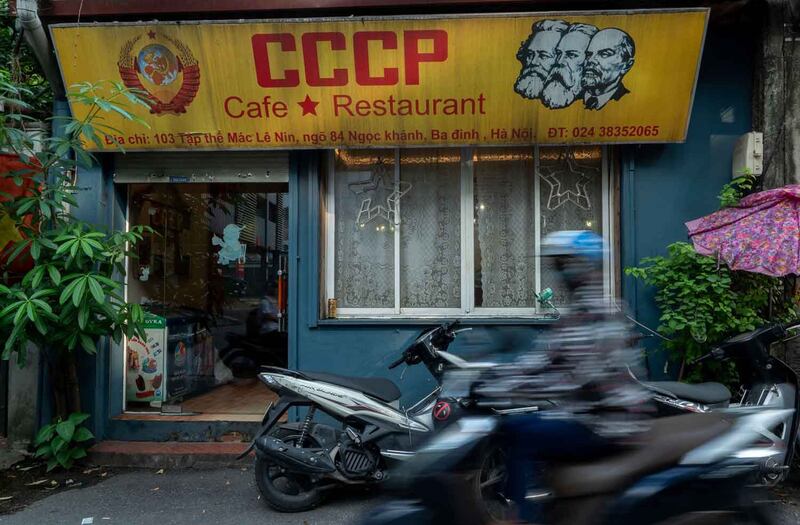
Edited by Mat Pennington and Jim Snyder
